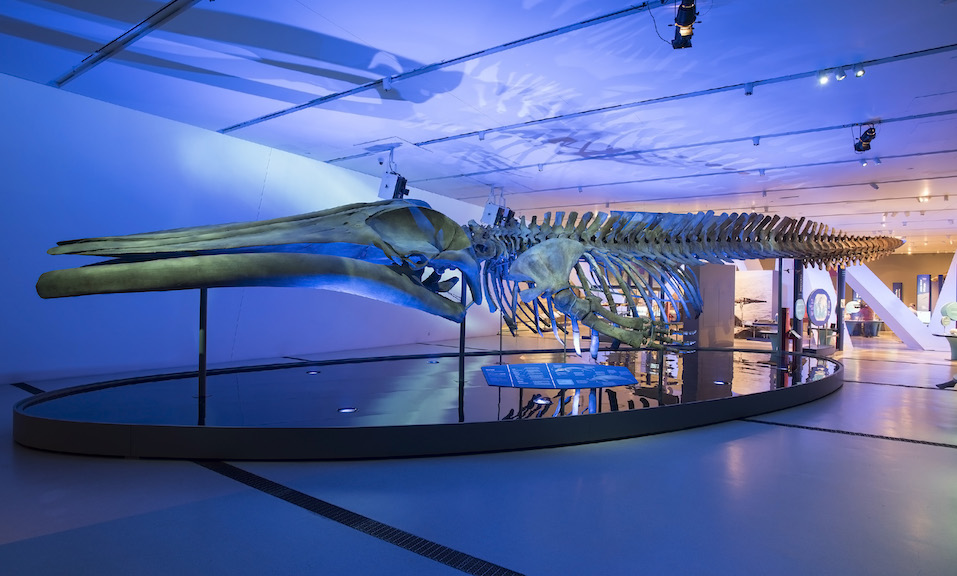In February of 2014, nine blue whales died after getting trapped in heavy sea ice in the Gulf of St. Lawrence. Two months later, two of their bloated carcasses, each weighing about 100 tonnes, washed ashore on beaches near Trout River, Newfoundland. They continued to decompose, producing a horrendous stench and bloating because of a build-up of gas inside.
Enter the Royal Ontario Museum (ROM), which saw the tragedy as an opportunity to conduct research into the elusive creatures, and then to build a travelling roadshow of one of the whale’s skeletons — and other parts.
A team descended on Trout River to flense (strip fat and blubber) one of the carcasses. After weeks of that gruesome work, the bones were driven 1,700 kilometres to Ontario, studied, buried in compost to finish cleaning the bones and then mounted for public viewing.
The skeleton of that whale, measuring 23.7 metres, is the centrepiece of a new exhibition now open at Telus World of Science, which also includes a touchable blowhole, a blue whale jaw and the first preserved blue whale heart.
There is much to learn: The blue whale, weighing up to 330,000 pounds (150 tonnes) is the heaviest animal to ever live; its heart pumps about 150 litres of blood every beat; the carcasses didn’t explode because the gasses seep out of the carcass naturally as the tissue breaks down; and the blue whale is considered endangered and is threatened by environmental change including habitat loss and toxics.
“We are incredibly fortunate to offer visitors of all ages a rare glimpse into the world of these astonishing creatures,” said the science centre’s CEO, Alan Nursall in a press release. “This is a once-in-a-lifetime chance to stand next to an 80-foot blue whale skeleton and begin to understand the enormity of these marine giants.”
Out of the Depths: The Blue Whale Story runs until April 2023.
